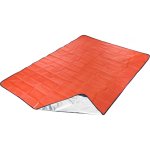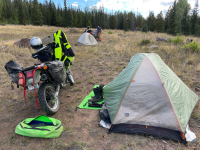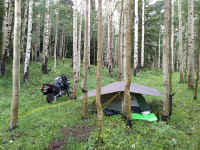BritKLR
Kapitis Indagatoris
LOL.....learned about tent "Foot Prints" in Boy Scouts in 1975.......ready for your mind to be blown?
Put a reflective safety blanket under your tent (perfect for a two man tent) and it does several things:
- water/vapor barrier (no condensation on the bottom of your tent in the morning that has to dry before packing it up)
- protects the tent floor from punctures/dirt/mud/sand/snow/etc
- reflects the cold down into the ground and your limited
body heat back up to you (important on cold mornings and long cold nights)
- lightweight and packs up the size of a sandwich
- much cheaper to replace then your tent floor
- use as an emergency blanket by itself
- use as emergency signal blanket
- use as an improvised piece
of medical gear
- lay on ground and toss your sleeping bag on it to sleep without a tent
- sit on it by the fire
- dry place to sit when the ground is wet
- use it on the ground to pack up your sleeping bag, tent, gear so as not roll your gear up in the dirt......
- wrap up in it for warm from the wind, rain, etc...
- etc.....
I learned about this in winter survival school and it has served me well over the years.


Put a reflective safety blanket under your tent (perfect for a two man tent) and it does several things:
- water/vapor barrier (no condensation on the bottom of your tent in the morning that has to dry before packing it up)
- protects the tent floor from punctures/dirt/mud/sand/snow/etc
- reflects the cold down into the ground and your limited
body heat back up to you (important on cold mornings and long cold nights)
- lightweight and packs up the size of a sandwich
- much cheaper to replace then your tent floor
- use as an emergency blanket by itself
- use as emergency signal blanket
- use as an improvised piece
of medical gear
- lay on ground and toss your sleeping bag on it to sleep without a tent
- sit on it by the fire
- dry place to sit when the ground is wet
- use it on the ground to pack up your sleeping bag, tent, gear so as not roll your gear up in the dirt......
- wrap up in it for warm from the wind, rain, etc...
- etc.....
I learned about this in winter survival school and it has served me well over the years.


Last edited:

